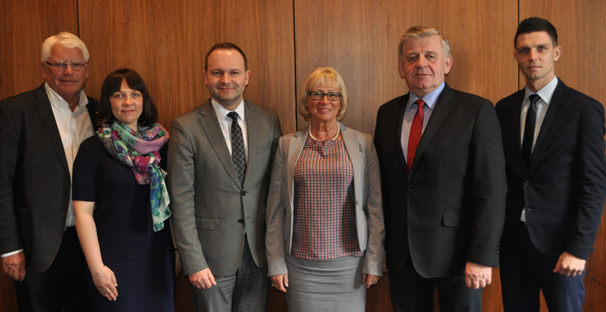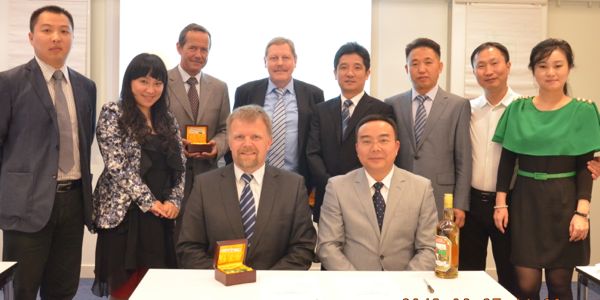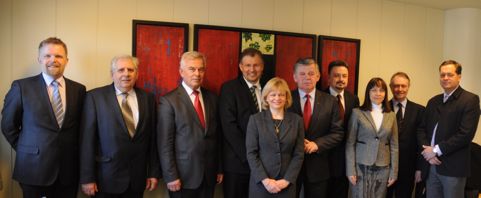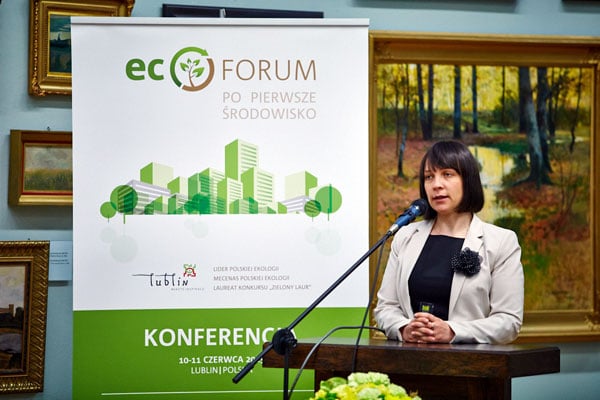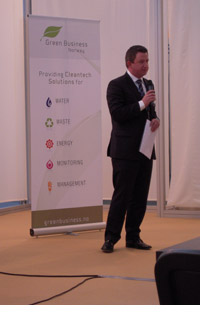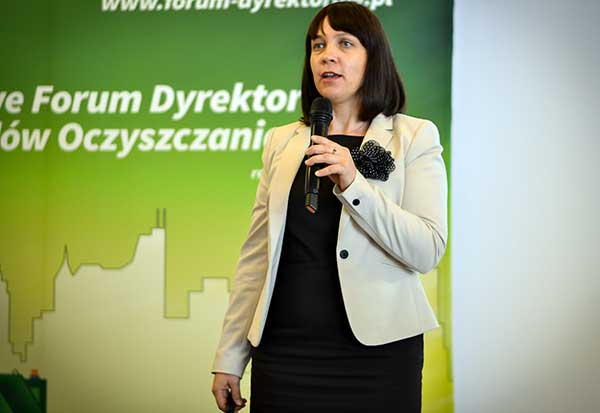Rules and regulations
Approved 24.04.07
1.1 – Name, organisational structure etc
1.2 – Members
§ 3.0 ORGANISATION’S LEADERSHIP & SIGNATURE
§ 4.0 THE ANNUAL GENERAL MEETING
4.1 – Responsibility
4.2 – Annual General Meeting
4.3 – Extraordinary annual general meeting
6.1 – Responsibility, organisation & voting
6.2 – Renumeration
6.3 – Tasks of the Board
6.4 – Decisions
6.5 – Budget
6.6 – Minutes
§ 8.0 FINANCES
8.1 – Financial obligations & shareholders’ equity
8.2 – Debt & Liabilities
8.3 – Limiting liabilities
§ 1.0 THE ORGANISATION
1.1 Name, organisation etc
The business is called Green Business Norway. It is a non-profit making interest organisation that is managed and operates according it its own statutes.
The organisation’s highest level of authority is the annual general meeting.
1.2 Members
Members are recruited from businesses which operate within the following fields:
- products with environmental and environmentally friendly energy profiles
- sustainable environmental and energy technology
- recycling
- environmental and energy consulting
§ 2.0 OBJECTIVES & INTENTIONS
The business does not aim to make a profit. Eventual profits will not be distributed to members, but be utilised in accordance with the organisation’s intentions.
The aim of the business is to contribute to:
- increased cooperation between member companies
- growth opportunities for member companies
This means that the organisation will promote and actively encourage members to focus on the increased marketing opportunities and growth through cooperation with other member companies.
Activities will include conveying information, business presentations, conferences, meetings and running development projects for the benefit of the sector with focus on innovation, enterprise and export.
The business will support the members in the following ways:
- Information on enterprise, innovation and export
- Planning and conducting meetings, seminars and other arrangements in accordance with board approval
- Be a catalyst for project development in and between member companies which will contribute towards growth in the environmental and energy sector
- Promote the potential of the environmental and energy sector
§ 3.0 THE ORGANISATION’S LEADERSHIP & SIGNATURE
The organisation is governed by the annual general meeting and the board.
The tasks of the annual general meeting are shown in § 4. The board is responsible for the organisation’s operations as shown in § 6.
The organisation is bound by the chairman of the board and business manager in collaboration. In the absence of the chairman then the vice chairman steps in.
§ 4.0 THE ANNUAL GENERAL MEETING
4.1 Responsibility
The annual general meeting is the organisation’s highest level of authority and monitors the board and conducts the annual general meeting.
The annual general meeting discusses:
- Presented issues
- annual report
- annual accounts
- subscriptions
- elections, including election of the board with the chairman and vice chairman
4.2 The Annual General Meeting
The annual general meeting should be held by the end of April to approve the previous year’s accounts.
The board should call the annual general meeting.
The meeting should be called with at least 14 days notice.
Each member has one vote at the annual general meeting with speech and voting rights.
The annual general meeting is constituted by appointing a chairman, secretary and 2 people to sign the minute book.
The meeting has a quorum when at least 30% of the members are present.
The chairman of the board is responsible for the meeting until the chairman of the meeting has been chosen.
Decisions are passed via simple majority. The leader of the meeting has the casting vote.
Minutes are sent the member companies.
4.3 Extraordinary general meeting
If the board or a minimum of 25% of the members demand it, then the board is obliged to call an extraordinary general meeting within 14 days from a written demand being received by the chairman of the board.
The minimum notice for calling an extraordinary general meeting is 10 days. The basis for the meeting should be documented in the notice.
§ 5.0 THE ELECTION COMMITTEE
The election committee consists of 3 members chosen by the annual general meeting. The board nominates the election committee.
The election committee proposes:
- Chairman of the board, vice chairman and board members
The election committee’s proposals are sent out with the notice of the annual general meeting
§ 6.0 THE BOARD
6.1 Responsibility, organisation & voting
The board is responsible for the effectiveness of the organisation and monitors the daily operation and conducts board meetings.
The board consists of 7 members who are chosen by the annual general meeting on the recommendation of the election committee. The board can be supplemented with observers with the approval of the annual general meeting.
Representatives are chosen for 2 years at a time, and approximately half stand for election at each annual general meeting.
The board makes agreements with those that will conduct the administrative functions in the organisation. This includes operation, finance and management of the organisation’s activities.
The board appoints the auditor.
6.2 Renumeration
The board members do not normally received renumeration.
Board members travel expenses are reinbursed according to the nationally approved scale. In those situations where the representatives of the board meet outside the board meetings, renumeration should be approved by the board.
6.3 Tasks of the Board
The board is led by the chairman, or the vice chairman in the case of absence. It is the chairman’s responsibility to call board meetings. The chairman should ensure that documentation is sent to the board members in reasonable time (approximately one week) before the meetings.
Issues presented to the board are elucidated and presented by the chairman or that person appointed by the board to work on a particular issue.
The board recommend a resolution to all issues that they present to the annual general meeting.
There are usually 8 board meetings annually.
6.4 Decisions
The board has a quorum where there are at least 3 members present.
Issues will be decided on by simple majority voting. The chairman has the casting vote. Each board member has one vote.
6.5 Budget
The board approves the budget. The board cannot approve a budget which requires higher income than that resulting from current agreements and membership subscriptions.
6.6 Minutes
The administration is responsible for the board minutes which are sent to the members within 10 days of the meeting.
§ 8.0 FINANCES
8.1 Financial obligations & shareholders equity
The business cannot invoke financial obligations which exceed those limits in accordance with the organisations earning potential.
The businesses shareholders equity consists of the retained resources.
The organisation cannot take on debt (borrow) without the approval of 2/3 of the annual general meeting.
The chairman of the board and the administration in collaboration can borrow for the temporary financing of defined projects limited to 100 000 NOK. Temporary financing in excess of this should be approved by the board.
The organisation cannot be held legally or financially responsible for suggestions and advice given to member companies.
§ 9.0 ALTERATIONS TO STATUTES
The annual general meeting can alter these statutes according to proposals made to the board with sufficient notice such that the proposals can be:
- discussed by the board
- sent out as an issue for the annual general meeting with the normal time restrictions
The statutes can only be altered by a qualified (2/3) majority.
§ 10.0 MEMBERSHIP
Joining and resigning occur in writing. Non payment of subscriptions invalidates membership. Membership is only invalidated after payment reminders have been sent over a period of 3 months from the due date.
New members should be approved by the board.
§ 11.0 DISSOLUTION OF THE ORGANISATION
The business can be dissolved in connection with the annual general meeting or extraordinary annual general meeting where it is proposed as an issue and approved by at least 75% of the members.
The businesses assets should not be distributed to the members, but distributed to one or more other organisations with similar aims or other non profit making bodies according to the approval of the annual general meeting.

























